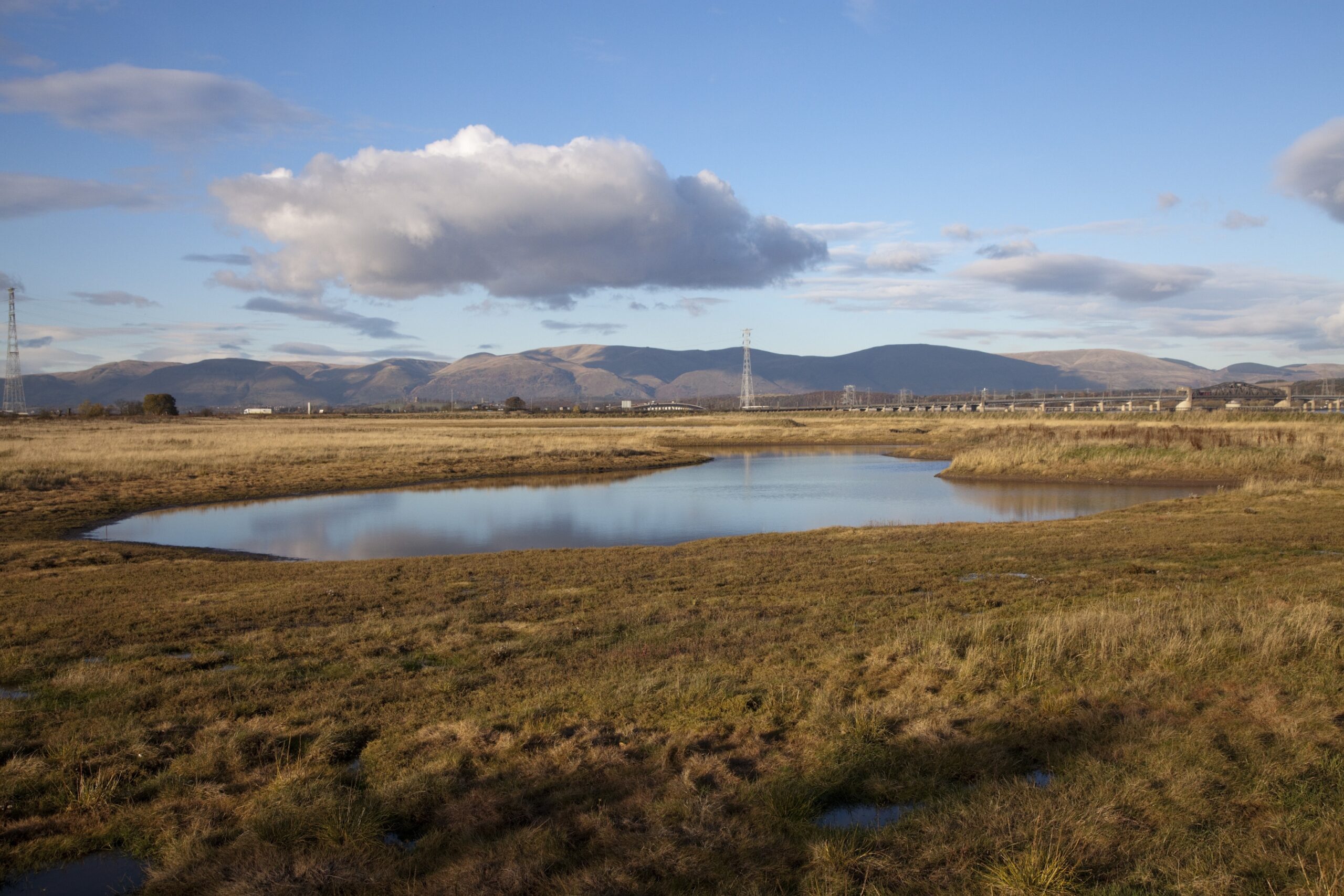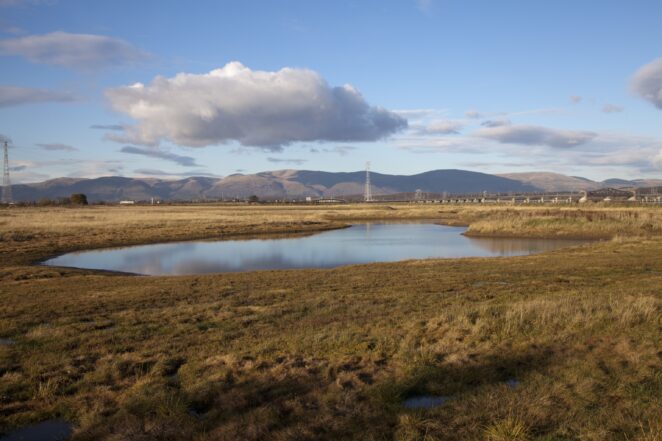Case-study /
Inner Forth Futurescape


Photograph by RSPB
The Inner Forth Futurescape aims to increase the resilience of wildlife and habitats by working in partnership on a landscape-scale around a core area for nature. Enabling both wildlife and people to thrive and adapt to climate change.
Landscape-scale conservation enables fragmented habitats to be joined up, assisting the movement of species due to climate change. By creating a network of new wetland habitats including saltmarsh, mudflat and reedbed, through landscape scale conservation, we will deliver for wildlife and help to achieve a wide range of other socio-economic benefits.
What are the issues?
Sea-level rise and storm surges due to climate change are causing coastal squeeze of this important habitat. Loss of saltmarsh habitat not only impacts the wildlife that depends on it, but also means the loss of an important natural flood defence and important carbon store. Loss of this habitat increases the likelihood of future flooding of farmland and property; plus further losses of internationally important bird populations.
Working in partnership through Futurescapes, the aim is to make UK landscapes more wildlife-friendly. In particular, focus has been on joining up fragments of habitat, creating bigger, better and more connected areas. This is important because animals are already moving because of climate change, so we need space to accommodate these movements.
What has been done so far?
The first stage of the project at Skinflats has already been completed. The work has involved habitat creation that has transformed farmland behind an old sea wall into a new wetland in which wildlife now thrives, and birds roost and feed. It’s shown what can be achieved, especially when we working in strong partnerships. The plan is now to expand upon this initial work and take action on a bigger, landscape-scale.
Further areas of brownfield and reclaimed land have been that have great potential for habitat restoration. In order to ensure the project is a success it is imperative that recreated wetland areas do not sit in isolation, but are surrounded and connected by farmland rich in wildlife. To these ends, we are working in partnership with local authorities, land managers, and other conservation organisations to make the most of every opportunity.
Communicating results
The project has been a great success story up to now, strong partnerships have been established and exciting projects are already underway. With a project on the scale of the Inner Forth however, it is always going to be difficult to communicate the project effectively, simply because we are talking about a whole landscape and not a single protected area or reserve. Thus far one of the best ways to communicate with local people, and educate them about the changes they will see in their landscape, is through working with local schools.
A recent film project, involving two local schools, will be premiered in the near future and shows children exploring their landscape and learning how it is changing through climate change. This has also allowed communication with parents, teachers and many more and therefore informed many people in the local area.
The Policy Context
Policy and decision makers have been an integral part of the project so far and as a result the project now has a reputation as a leading example of landscape scale conservation working to tackle the pressure of climate change.
Moving forward, it is vital that decision makers take a leading role in proactively encouraging a sustainable landscape that is good for wildlife and people. This will ensure issues such as sea level rise are dealt with in a pro-active manner.
There needs to be incentives for people to think long term. Constantly rebuilding and raising sea walls in areas that are under increasing pressure from flooding is not economically viable in the long term. We need leadership from decision makers to establish mechanisms that will allow landowners to act in a way that will protect their interests, and the interests of wildlife.
What are the key messages for Policy and Decision Makers?
There are several key messages that policy and decision makers should bear in mind in relation to Inner Forth Futurescapes:
- The Inner Forth is a spectacular place for wildlife, being home to thousands of wintering and migrating waders and wildfowl. The area is also vital for industry, being home to sites such as Grangemouth oil refinery and Longannet power station.
- Action on the scale necessary will not be achieved by any one landowner/ government agency/ charity working alone. Only through working together as a partnership can we achieve the change.
- Many of the sea walls along the river are deteriorating and it is not sustainable to rebuild these in the long term.
- The creation of inter-tidal habitats could be fantastic for the wildlife of the area, but it could also have real benefits for flood protection. Managed realignment enables us to create new areas of salt marsh and mudflat habitat in a controlled manner that protects large areas of the Inner Forth from flooding in the long term.
- The Inner Forth Futurescape has attracted support from all four local councils in the area, and from SEPA and SNH.
- Over the next few years habitat enhancement projects will be delivered as part of the RSPB led Inner Forth Landscape Initiative.
